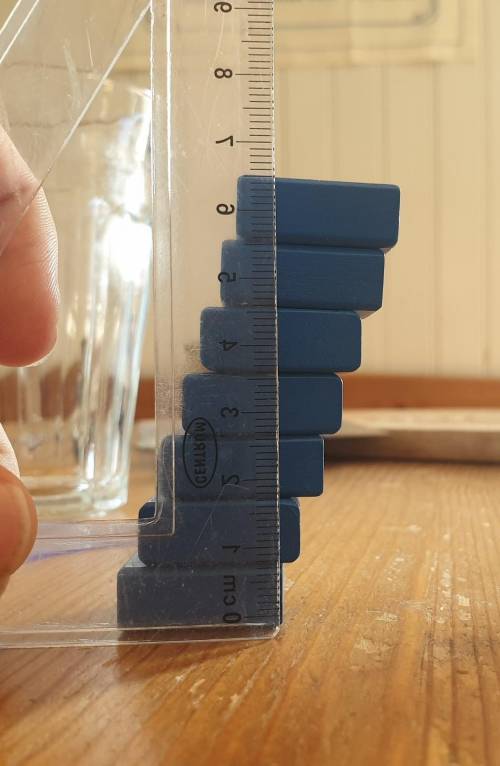Why can't you continue building the tower forever?

How does this work?
Why won't it fall?
Why can't you continue building the tower forever?
From what I've been told, if the center of mass leaves it's support area, the object falls.
But the object on the tops center of mass is certainly outside of its support area (the object at the bottom)
Please explain! Thank you in advance. : )


Answers: 3
Other questions on the subject: Physics

Physics, 22.06.2019 09:30, officialariana01
In a heat engine if 1000 j of heat enters the system the piston does 500 j of work, what is the final internal energy of the system if the initial energy was 2000 j? 1. write the equation 2.list out your known variables 3.plug the numbers into the equations 4.solve 5.write your solution statement that includes initial energy and final
Answers: 3

Physics, 22.06.2019 10:00, jeffffffff
**urgent** roberto plans to use two transformers to reduce a voltage of 120 v to 4 v. he uses a transformer that has 300 coils in the primary winding and 50 coils in the secondary winding. he has four other transformers, as listed in the table. which transformer should roberto use to have an ending voltage of 4 v? a- w b-xc- yd- z
Answers: 1

Physics, 22.06.2019 13:30, Travisbennington
Which is not an example of how an object gains elastic potential energy by stretching? a. jumping on a pogo stick b. pulling on a rubber band c. jumping on a trampoline
Answers: 1

Physics, 22.06.2019 23:00, shelbybibb99
Acommon technique in analysis of scientific data is normalization. the purpose of normalizing data is to eliminate irrelevant constants that can obscure the salient features of the data. the goal of this experiment is to test the hypothesis that the flux of light decreases as the square of the distance from the source. in this case, the absolute value of the voltage measured by the photometer is irrelevant; only the relative value conveys useful information. suppose that in part 2.2.2 of the experiment, students obtain a signal value of 162 mv at a distance of 4 cm and a value of 86 mv at a distance of 5.7 cm. normalize the students' data to the value obtained at 4 cm. (divide the signal value by 162.) then calculate the theoretically expected (normalized) value at 5.7 cm.
Answers: 2
Do you know the correct answer?
How does this work?
Why won't it fall?
Why can't you continue building the tower forever?
Why can't you continue building the tower forever?
Questions in other subjects:

Mathematics, 16.07.2019 20:40


Mathematics, 16.07.2019 20:40

Biology, 16.07.2019 20:40

English, 16.07.2019 20:40




Mathematics, 16.07.2019 20:40

Chemistry, 16.07.2019 20:40


 , is given by:
, is given by: , where
, where  is radius,
is radius,  is force, and
is force, and  is the angle between the radius and level arm.
is the angle between the radius and level arm.  is used to calculate the relevant component of a force producing torque. In this case, the only force acting on the object is the force of gravity. Therefore,
is used to calculate the relevant component of a force producing torque. In this case, the only force acting on the object is the force of gravity. Therefore,  and recall
and recall  .
. , there is no torque.
, there is no torque.



